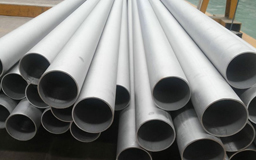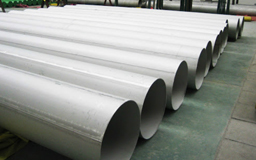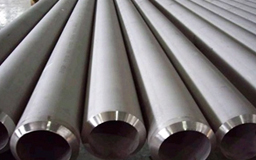- Duplex Steel S31803 Plates Supplier in Qatar
- Corrosion Resistance of Duplex Steel S31803 Pipe Fittings: A Comprehensive Guide
- A Comprehensive Beginner's Guide to Duplex Steel Pipes
- Choosing the Right Duplex Steel Sheets and Plates for Your Project
- Duplex Steel Sheets and Plates: The Perfect Choice for Offshore Applications
- Duplex Steel S31803 Coils in marine environments: Performance and suitability
- Comparing duplex steel 2205 plates with other types of stainless steel alloys
- Duplex Steel 2205 Plates in the Construction Industry: Applications and Benefits
- Understanding Duplex Steel 2205 Sheets: Composition, Properties, and Applications
- Applications and Advantages of Duplex Steel 2205 Sheets in the Oil and Gas Industry
- Manufacturing Process of Duplex Steel S31803 Plates
- Welding and Fabrication of Duplex Steel S31803 Plates
- Advantages of Duplex Steel S31803 Plates over other types of steel
- Comparing duplex steel 2205 plates with other types of stainless steel alloys
A Comprehensive Beginner's Guide to Duplex Steel Pipes
Welcome to our comprehensive beginner's guide to duplex steel pipes. In this guide, we will provide you with a detailed overview of duplex steel pipes, highlighting their unique properties, grades, applications, and advantages. Whether you are new to the world of duplex steel or seeking to expand your knowledge, this guide will serve as an invaluable resource.
What is Duplex Steel?
Duplex steel is a type of stainless steel that contains a balanced microstructure of both austenite and ferrite phases. This unique composition gives duplex steel its desirable properties, including high strength, excellent corrosion resistance, and good weldability. The presence of both phases contributes to the enhanced mechanical and corrosion-resistant characteristics of duplex steel pipes.
Composition and Microstructure
Duplex steel is primarily composed of iron, along with significant amounts of chromium, nickel, and molybdenum. The specific composition may vary, but typically it consists of around 22-26% chromium, 4-7% nickel, and 0.1-0.3% molybdenum. This combination of elements creates a microstructure consisting of approximately 50% ferrite and 50% austenite, resulting in a duplex structure.
Key Properties of Duplex Steel Pipes
Corrosion Resistance: One of the most notable advantages of duplex steel pipes is their exceptional corrosion resistance. Duplex steel exhibits superior resistance to a wide range of corrosive environments, including chloride-induced stress corrosion cracking, pitting, and crevice corrosion. This makes duplex steel pipes highly suitable for applications in aggressive environments such as offshore oil and gas platforms, chemical processing plants, and marine structures.
Strength and Toughness: Duplex steel pipes offer a remarkable combination of high strength and toughness. The dual-phase microstructure provides increased strength, allowing duplex steel pipes to withstand high pressures and temperatures. This property makes them ideal for applications requiring structural integrity and resistance to mechanical stress.
Weldability: Duplex steel pipes have good weldability, which is a significant advantage in various industries. They can be easily welded using conventional welding techniques, including TIG (Tungsten Inert Gas) welding, MIG (Metal Inert Gas) welding, and SMAW (Shielded Metal Arc Welding). However, it is crucial to follow proper welding procedures and select suitable filler materials to maintain the desired properties of the welded joint.
Fatigue Resistance: Another important property of duplex steel pipes is their excellent resistance to fatigue. They exhibit superior resistance to cyclic loading and are less prone to fatigue failure compared to other materials. This characteristic makes duplex steel pipes suitable for applications involving dynamic loads, such as offshore risers, heat exchangers, and piping systems subject to vibration.
Duplex Steel S32205 and S31803 Grades Pipes
UNS S32205 and UNS S31803 are two commonly used grades of duplex steel pipes. They belong to the duplex stainless steel family and offer similar properties, making them widely utilized in various industries.
Chemical Composition:
Both S32205 and S31803 grades have a similar chemical composition with slight differences. They typically contain the following elements:
- Chromium (Cr): 21.0-23.0%
- Nickel (Ni): 4.5-6.5%
- Molybdenum (Mo): 2.5-3.5%
- Manganese (Mn): 2.0% max
- Silicon (Si): 1.0% max
- Phosphorus (P): 0.03% max
- Sulfur (S): 0.02% max
- Nitrogen (N): 0.08-0.20%
Properties:
Both UNS S32205 and UNS S31803 grades exhibit excellent properties that make them suitable for a wide range of applications:
- Corrosion Resistance: Duplex S32205 and S31803 offer exceptional resistance to various corrosive environments, including chloride-induced stress corrosion cracking, pitting, and crevice corrosion. They are particularly well-suited for use in aggressive environments such as offshore oil and gas platforms, chemical processing plants, and marine structures.
- Strength and Toughness: Both grades provide high strength and toughness, enabling duplex steel pipes to withstand high pressures and temperatures. This makes them ideal for applications that require structural integrity and resistance to mechanical stress.
- Weldability: Duplex S32205 and S31803 grades have good weldability, allowing for easy and efficient welding using conventional techniques such as TIG (Tungsten Inert Gas) welding, MIG (Metal Inert Gas) welding, and SMAW (Shielded Metal Arc Welding). Proper welding procedures and appropriate filler materials should be used to maintain the desired properties of the welded joints.
- Fatigue Resistance: Both grades exhibit excellent resistance to fatigue, making them suitable for applications subjected to cyclic loading and vibrations. They have a high endurance limit and are less prone to fatigue failure compared to other materials.
Applications of Duplex Steel Pipes
Duplex steel pipes find extensive use in various industries due to their exceptional properties. Some common applications include:
- Oil and Gas Industry: Duplex steel pipes are used in subsea and topside piping systems, offshore platforms, and oil refineries.
- Chemical Processing: They are employed in chemical plants, reactors, and pipelines for handling corrosive chemicals.
- Desalination Plants: Duplex steel pipes are utilized in seawater desalination plants for their corrosion resistance.
- Pulp and Paper Industry: They find application in paper mills for transporting corrosive chemicals and wastewater.
- Marine Applications: Duplex steel pipes are used in shipbuilding, offshore structures, and seawater handling systems.
- Other Industries: They are also employed in power generation, food processing, pharmaceuticals, and wastewater treatment.
Advantages of Duplex Steel Pipes
Enhanced Corrosion Resistance: Duplex steel pipes offer superior corrosion resistance compared to conventional stainless steel grades. Their resistance to pitting, crevice corrosion, and stress corrosion cracking makes them suitable for challenging environments.
High Strength and Durability: Duplex steel pipes possess high tensile and yield strength, providing excellent structural integrity. They can withstand high-pressure applications, heavy loads, and harsh operating conditions, ensuring long-lasting performance.
Cost-Effectiveness: Despite their superior properties, duplex steel pipes can offer cost savings in the long run. Their extended service life, reduced maintenance requirements, and lower lifecycle costs make them a cost-effective choice for many applications.
Versatility: Duplex steel pipes are available in various sizes, thicknesses, and configurations to meet diverse project requirements. They can be seamlessly integrated into existing systems or designed for new installations, offering flexibility and adaptability.
Manufacturing Process of Duplex Steel Pipes
Duplex steel pipes are manufactured through different processes, including hot extrusion, cold drawing, and welded and seamless processes. Hot extrusion involves forcing a heated billet through a die, while cold drawing pulls the duplex steel through a die to achieve the desired size and dimensions. Welded duplex steel pipes are manufactured by welding together duplex steel plates or by forming longitudinally welded pipes.
Common Types of Duplex Steel Pipes
There are two common types of duplex steel pipes:
- Duplex Stainless Steel Seamless Pipes: Seamless duplex steel pipes are produced without any welding joints, resulting in a continuous, homogeneous structure. These pipes are known for their high strength, smooth surface finish, and excellent corrosion resistance.
- Duplex Stainless Steel Welded Pipes: Welded duplex steel pipes are manufactured by welding together duplex steel plates or by forming longitudinally welded pipes. These pipes offer cost advantages and are suitable for applications that do not require high-pressure resistance.
Inspection and Testing of Duplex Steel Pipes
To ensure the quality and integrity of duplex steel pipes, various inspection and testing methods are employed, including non-destructive testing (NDT), mechanical testing, chemical analysis, and dimensional inspection. NDT methods such as ultrasonic testing, radiography, magnetic particle testing, and liquid penetrant testing are used to detect any defects or discontinuities in the pipes. Mechanical tests, including tensile testing, hardness testing, and impact testing, are performed to assess the mechanical properties and performance of duplex steel pipes. Chemical analysis is conducted to verify the composition of the duplex steel and ensure it meets the required standards and specifications. Dimensional inspection involves checking the dimensions, outer diameter, wall thickness, and length of the pipes to ensure they meet the specified tolerances.
Maintenance and Care of Duplex Steel Pipes
Proper maintenance and care can extend the lifespan of duplex steel pipes. Regular cleaning and passivation help remove contaminants and maintain the corrosion resistance of duplex steel pipes. Avoiding contact with incompatible materials and preventing exposure to aggressive chemicals can prevent corrosion and degradation. Proper handling, liftingand storage techniques should be followed to prevent damage or contamination during transportation or storage. Regular inspections, including visual inspections and non-destructive testing, should be conducted to identify any signs of corrosion, leaks, or other issues.
Future Trends and Developments in Duplex Steel Pipes
The field of duplex steel pipes is continually evolving. Ongoing research and development efforts focus on improving the properties, developing new alloys, and enhancing manufacturing processes to meet the growing demands of various industries. Continuous advancements aim to further enhance the corrosion resistance, strength, weldability, and overall performance of duplex steel pipes.
Duplex steel pipes offer a unique combination of properties that make them a preferred choice in many industries. Their corrosion resistance, high strength, weldability, and fatigue resistance contribute to their versatility and reliability. With applications ranging from oil and gas to chemical processing and marine industries, duplex steel pipes provide long-lasting performance, cost-effectiveness, and durability. By understanding the composition, properties, manufacturing processes, and maintenance considerations of duplex steel pipes, you can make informed decisions and leverage the advantages offered by this exceptional material. Stay updated with the latest trends and advancements in duplex steel pipes to unlock their full potential in your projects.
Numax Steels is a leading supplier & stockist of duplex steel pipes in various sizes & grades. For any requirement of duplex steel S31803/S32205 Pipes for your project you can contact us and we will get back to you with the best prices.



Duplex Steel Pipes Specification
| Specifications | ASTM A 790 ASME SA 790 |
| Dimensions | ASTM, ASME and API |
| Size | 1/2″NB TO 12 “NB IN |
| Schedule |
SCH 5, SCH10, SCH 40, SCH 80, SCH 80S, SCH 160, SCH XXS, SCH XS |
| Type | Seamless / ERW / Welded / Fabricated / LSAW Pipes |
| Form | Round, Square, Rectangular, Honed, Hydraulic, etc. |
| Length | Single Random, Double Random & Cut Length. |
| End | Plain End, Beveled End, Treaded | Grades | UNS S32205, UNS S31803 |
Duplex Steel S31803 Pipes Supplier, Duplex Steel 2205 Seamless Pipes Manufacturer, Duplex S32205 Pipes Supplier, Duplex Steel Welded Pipes Stockist, Duplex Steel ERW Pipes Exporter, Duplex 1.4462 Pipes, Duplex S31803 ERW Pipes, Duplex Steel S32205 Fabricated Pipes Supplier in India
We Export To
Egypt, Dubai, Cyprus, Kazakhstan, Ouagadougou, Mozambique, Mbuji-Mayi, Zaria, Ghana, Maputo, Abidjan, Douala, Luanda, Colombia, UK, Giza, Russia, Pretoria, Algiers, Lagos, Democratic Republic of the Congo, New Zealand, Iraq, UAE, Freetown, Saudi Arabia, Bulawayo, Azerbaijan, Lubumbashi, Oman, Houston, Rabat, Mexico, Turkey, Port Elizabeth, Bahrain, Bamako, Harare, Kinshasa, Abu Dhabi, Qatar, Angola, Dakar, Trinidad and Tobago, United States, Fez, Colombo, Algeria, Khartoum, Subra al-Haymah, Nairobi, Cameroon, Cairo, Germany, Accra, Durban, Israel, Port Harcourt, Ibadan, Canada, Thailand (Bangkok), Jordan, Brazzaville, Addis Ababa, Casablanca, Yemen, Morocco, Sudan, Omdurman, Alexandria, Australia, Johannesburg, Mogadishu, Africa, Tripoli, Ethiopa, Kolwezi, Singapore, Conakry, Sri Lanka, Hong Kong, Peru, Dar es Salaam, London, Nigeria, Lebanon, Benin, Brazil, New York, Cape Town, South Africa, Uganda, Italy, Vietnam, Venezuela, Kuwait, Maiduguri, Soweto, Yaoundé, Iran, Argentina, Chine, Kaduna, Indonesia, Kano, Kampala, Antananarivo, Tunisia, Malaysia.We Supply To
Benin, Betul, Douala, Mizoram, Tadepalligudem, Lebanon, Puducherry, Uganda, Maharashtra, Angola, Alexandria, India, Morocco, Colombo, Accra, Maiduguri, Mbuji-Mayi, Algeria, Benin, Venezuela, Mozambique, Ghana, Omdurman, Dar es Salaam, Jamalpur, Brazzaville, Kerala, Kinshasa, Kaduna, Kolkata, Delhi, Yaoundé, Thailand (Bangkok), Fez, Oman, Cameroon, Udgir, Lagos, Lucknow, Chennai, Ibadan, Abu Dhabi, Democratic Republic of the Congo, Conakry, Suryapet, Cyprus, Dakar, Karnataka, Ambala, Ethiopa, Hong Kong, Maputo, Bhiwadi, Hyderabad, Tripoli, Miryalaguda, Surat, Tripura, Addis Ababa, Rabat, Pretoria, Port Harcourt, Yemen, Kano, Ballia, Ouagadougou, Bansberia, Mumbai, Bamako, Manipur, Antananarivo, New York, Pune, Luanda, Kampala, Johannesburg, Singapore, Abidjan, Harare, Qatar, Nairobi, Andhra Pradesh, Jaipur, Kolwezi, Jordan, Freetown, Khartoum, Cairo, Bundi, Muktsar, Sadar, Bulawayo, Durban, Algiers, Ahmedabad, Lubumbashi, Baraut, Soweto, Nagapattinam, Mogadishu, Zaria, Giza, Casablanca, Cape Town, Bangalore, Subra al-Haymah, Port Elizabeth, Russia, Buxar. Request A Quote
Request A Quote View Certificate
View Certificate Weight Calculator
Weight Calculator Download Brochure
Download Brochure